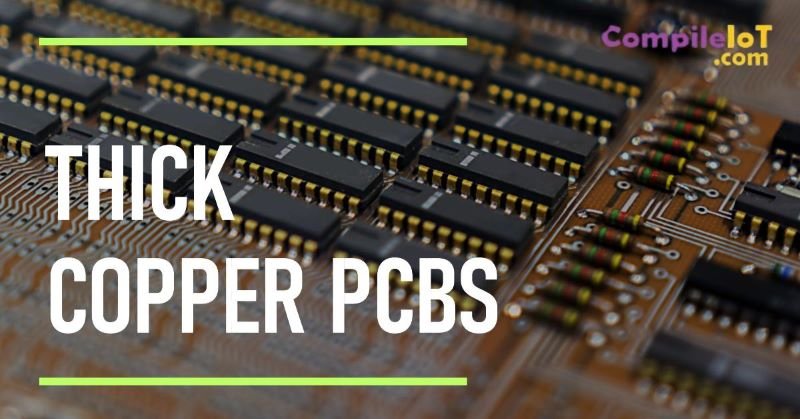Thick Copper PCBs
When it comes to printed circuit boards (PCBs), one of the key factors to consider is the copper thickness. Most PCBs have a standard copper thickness of 1oz or 2oz, but there are instances where a thicker copper layer is required. This is where thick copper PCBs come into play.
What are Thick Copper PCBs?
Thick copper PCBs, also known as heavy copper PCBs, are PCBs that have a copper layer thickness greater than 2oz. They are typically used in applications that require high current carrying capacity, better thermal management, and increased mechanical strength.
Thick copper PCBs are commonly used in industries such as power electronics, automotive, aerospace, and renewable energy. These industries often require PCBs that can handle high power and heat dissipation, making thick copper PCBs the ideal choice.
The Benefits of Thick Copper PCBs
There are several advantages to using thick copper PCBs:
- High Current Carrying Capacity: Thick copper PCBs have a larger cross-sectional area, allowing them to carry higher currents without overheating. This makes them suitable for power electronics applications such as inverters, motor controllers, and power supplies.
- Better Thermal Management: The thicker copper layer in these PCBs helps in dissipating heat more efficiently. This is crucial in applications where heat generation is high, such as LED lighting, automotive electronics, and power distribution systems.
- Increased Mechanical Strength: The additional copper thickness provides enhanced mechanical strength to the PCB, making it more resistant to bending, warping, and vibration. This makes thick copper PCBs suitable for rugged environments and applications that require durability.
- Improved Reliability: Thick copper PCBs offer better reliability and longevity due to their ability to handle higher current densities and thermal loads. This makes them a preferred choice in critical applications where failure is not an option.
Design Considerations for Thick Copper PCBs
Designing thick copper PCBs requires careful consideration of various factors:
- Trace Width and Spacing: The wider trace widths and larger spacing between traces are necessary to accommodate the higher current carrying capacity of thick copper PCBs. This ensures that the traces do not overheat and cause performance issues.
- Plating and Etching: Specialized plating and etching techniques are required to achieve the desired copper thickness. This involves multiple plating and etching cycles to build up the copper layer uniformly.
- Thermal Management: Adequate thermal vias and heat sinks should be incorporated into the PCB design to facilitate efficient heat dissipation. This helps in preventing overheating and ensures the reliability of the PCB.
- Manufacturing Capability: Not all PCB manufacturers have the capability to produce thick copper PCBs. It is important to choose a manufacturer with experience and expertise in producing PCBs with thick copper layers.
Applications of Thick Copper PCBs
Thick copper PCBs find applications in various industries:
- Power Electronics: Inverters, motor controllers, power supplies, and high-power amplifiers
- Automotive: Electric vehicle charging systems, battery management systems, and power distribution modules
- Aerospace: Satellite systems, avionics, and communication equipment
- Renewable Energy: Solar inverters, wind power systems, and energy storage systems
- LED Lighting: High-power LED modules and drivers
Conclusion
Thick copper PCBs offer numerous advantages in terms of high current carrying capacity, improved thermal management, increased mechanical strength, and enhanced reliability. They are essential for applications that require the handling of high power and heat dissipation. When designing and manufacturing thick copper PCBs, it is important to consider factors such as trace width and spacing, specialized plating and etching techniques, thermal management, and the capabilities of the PCB manufacturer. With their wide range of applications across industries such as power electronics, automotive, aerospace, renewable energy, and LED lighting, thick copper PCBs play a crucial role in powering the technologies of today and tomorrow.








